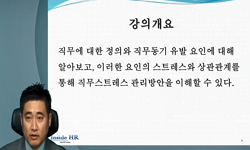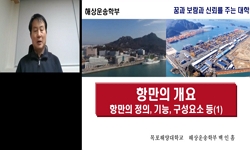본 연구에서는 소유역별 비점오염원 관리 방안 수립을 위한 방법으로, 장기 모니터링 자료를 활용하여 첨두수질농도(Peak concentration)를 산정하고, 해당 농도를 기준으로 유출관련 다양한 평...
http://chineseinput.net/에서 pinyin(병음)방식으로 중국어를 변환할 수 있습니다.
변환된 중국어를 복사하여 사용하시면 됩니다.
- 中文 을 입력하시려면 zhongwen을 입력하시고 space를누르시면됩니다.
- 北京 을 입력하시려면 beijing을 입력하시고 space를 누르시면 됩니다.

금호강 유입 지천별 강우 모니터링을 통한 비점오염원 관리방안 연구 = A Study on the Management of Nonpoint Pollution Source by Precipitation Monitoring by Tributary in Gumho River
한글로보기https://www.riss.kr/link?id=A105288727
- 저자
- 발행기관
- 학술지명
- 권호사항
-
발행연도
2018
-
작성언어
-
-
주제어
비점오염원 ; 지천 ; 유역 ; 관리방안 ; Nonpoint Source ; Tributary ; Basin ; Management Methods
-
KDC
530
-
등재정보
KCI등재
-
자료형태
학술저널
-
수록면
331-341(11쪽)
-
KCI 피인용횟수
0
- DOI식별코드
- 제공처
- 소장기관
-
0
상세조회 -
0
다운로드
부가정보
국문 초록 (Abstract)
본 연구에서는 소유역별 비점오염원 관리 방안 수립을 위한 방법으로, 장기 모니터링 자료를 활용하여 첨두수질농도(Peak concentration)를 산정하고, 해당 농도를 기준으로 유출관련 다양한 평가 인자와의 비교 분석을 통해 대상 소유역별 비점오염원 관리 방안을 도출 하였다. 금호강 유역을 대상으로 2015부터 2017년까지 3년간 수행된, 총 113회 모니터링 자료를 분석한 결과, 모니터링 지점의 선행건기일수는 지역별로 1.0 ~ 14.0일 범위이며 총강수량은 상류 88.7 ㎜, 지류 101.3 ㎜, 하류 103.1 ㎜로 조사되었다. 오염물질항목별 평균 첨두수질농도까지 의 EMCs는 BOD는 3월, 4월, COD는 4월, SS는 4월, 8월, T-N은 4월, T-P는 8월에 가장 높은 값을 나타내었고, 모니터링 지점별 오염물질 평균 첨두수질농도까지의 EMC는 금호강 본류의 경우 4 ~ 8월, 지류의 경우는 3 ~ 8월의 봄 ~ 여름사이로 높은 첨두수질농도를 나타내는 것으로 조사되었다. 장기모니터링 자료를 활용하여 통계적 분석을 실시하고, 대상유역에 대한 오염원 조사 분석 결과를 활용하여, 지천별 소유역 기준 비점오염원 관리방안을 제시하였다. 유역별 오염원 비율을 분석하여 주요 오염원을 선정하고, 해당 오염원 저감에 적합한 비점저감기술을 제시하여, 추후 대상유역에 대한 비점오염원 관리계획 수립 시 기초자료로서 활용될 수 있도록 하였다.
다국어 초록 (Multilingual Abstract)
In this study, peak concentration was calculated using long - term monitoring results in order to establish nonpoint pollution source management plan for each station. Based on the estimated peak water concentration, the non - point pollution source m...
In this study, peak concentration was calculated using long - term monitoring results in order to establish nonpoint pollution source management plan for each station. Based on the estimated peak water concentration, the non - point pollution source management method was derived through comparison analysis with various evaluation factors related to runoff.
The 113 monitoring results of the Gumho River watershed were statistically analyzed. The number of dry days in the monitoring point was ranged from 1.0 to 14.0 days in each region. Total precipitation was 88.7 ㎜ upstream, 101.3 ㎜ tributary, and 103.1 ㎜ downstream. As a result of analysis of EMCs up to the average peak water quality concentration by pollutant item, BOD was highest in March and April, COD in April, SS in April and August, T-N in April and T-P in August. The peak EMCs of the pollutant up to the average peak pollutant concentration by the monitoring point was high in April - August in the main stream of the Gumho River and between spring and summer in March - August in the tributary. Statistical analysis was conducted using long - term monitoring data, and a non - point pollution source management plan was proposed based on the results of the nationwide pollution source analysis for the target watershed. By analyzing the pollutant ratio by watershed, we can select the main pollutant source and present the nonpoint pollution sources reduction technique suitable for the reduction of the pollutant source, so that it can be used as the basic data for establishing non - point pollutant management plan for the target watershed.
목차 (Table of Contents)
- Abstract
- 요지
- 1. 서론
- 2. 연구방법
- 3. 연구결과
- Abstract
- 요지
- 1. 서론
- 2. 연구방법
- 3. 연구결과
- 4. 결론
- References
참고문헌 (Reference)
1 노성덕, "횡성호 유역의 비강우시 및 강우시 오염물질 유출특성" 한국물환경학회 22 (22): 695-705, 2006
2 최윤영, "토지이용별에 따른 초기강우 유출량의 비점오염물 특성 분석" 한국환경과학회 20 (20): 417-426, 2011
3 갈병석, "첨두수질농도를 이용한 비점오염원 관리방안 연구" 한국습지학회 19 (19): 287-295, 2017
4 Novotny, V., "Water Quality: Prevention, Identification and Management of Diffuse Pollution" Van Nostrand Reinhold 1994
5 Jung, D.H., "Stormwater Runoff Characteristics of Non-point Source Pollutants According to Landuse of Urban Area" 16 (16): 525-532, 2007
6 Bedient, P.B., "Stormwater Pollutant Load-runoff Relationship" 52 (52): 2396-2402, 1980
7 US. EPA, "Results of the Nationwide Urban Runoff Program, Vol. 1. Final Report. Water Planning Division" U.S. EPA 1983
8 NIER (National Institute of Environmental Research), "Customized Policy Suport for Nonpoint Polution Management and Water Circulation Improvement(I): Suwon, Doam Lake Nonpoint Source Polution Management Policy Fedback and Establishment of Necesary Water Circulation Improvement Areas" 2016
9 Daegu Regional Environment Agency, "A Study on the Influence of Nonpoint Source on the Gumho River Basin" 2016
10 US. EPA, "A Quick Reference Guide: Developing Nonpoint Source Load Allocations for TMDLs" 1991
1 노성덕, "횡성호 유역의 비강우시 및 강우시 오염물질 유출특성" 한국물환경학회 22 (22): 695-705, 2006
2 최윤영, "토지이용별에 따른 초기강우 유출량의 비점오염물 특성 분석" 한국환경과학회 20 (20): 417-426, 2011
3 갈병석, "첨두수질농도를 이용한 비점오염원 관리방안 연구" 한국습지학회 19 (19): 287-295, 2017
4 Novotny, V., "Water Quality: Prevention, Identification and Management of Diffuse Pollution" Van Nostrand Reinhold 1994
5 Jung, D.H., "Stormwater Runoff Characteristics of Non-point Source Pollutants According to Landuse of Urban Area" 16 (16): 525-532, 2007
6 Bedient, P.B., "Stormwater Pollutant Load-runoff Relationship" 52 (52): 2396-2402, 1980
7 US. EPA, "Results of the Nationwide Urban Runoff Program, Vol. 1. Final Report. Water Planning Division" U.S. EPA 1983
8 NIER (National Institute of Environmental Research), "Customized Policy Suport for Nonpoint Polution Management and Water Circulation Improvement(I): Suwon, Doam Lake Nonpoint Source Polution Management Policy Fedback and Establishment of Necesary Water Circulation Improvement Areas" 2016
9 Daegu Regional Environment Agency, "A Study on the Influence of Nonpoint Source on the Gumho River Basin" 2016
10 US. EPA, "A Quick Reference Guide: Developing Nonpoint Source Load Allocations for TMDLs" 1991
11 Committee for the Nakdong River Water Management System, "A Monitoring and Management Scheme for the Non-Point Sources" 2016
12 Committee for the Han River Water Management System, "A Monitoring and Management Scheme for the Non-Point Sources" 2016
13 Committee for the Nakdong River Water Management System, "A Monitoring and Management Scheme for the Non-Point Sources" 2017
동일학술지(권/호) 다른 논문
-
- 한국방재학회
- 정주영(Jung Jooyoung)
- 2018
- KCI등재
-
- 한국방재학회
- 이명진(Lee Myoungjin)
- 2018
- KCI등재
-
재난별 피해예측결과와 연계하기 위한 건축물 인벤토리 구축 방안에 대한 연구
- 한국방재학회
- 정운철(Jung Woonchul)
- 2018
- KCI등재
-
재해피해액 산정을 위한 재해손실평가 인벤토리 구축 및 피해산정방법 연구
- 한국방재학회
- 김혜령(Kim Haeryung)
- 2018
- KCI등재
분석정보
인용정보 인용지수 설명보기
학술지 이력
| 연월일 | 이력구분 | 이력상세 | 등재구분 |
|---|---|---|---|
| 2026 | 평가예정 | 재인증평가 신청대상 (재인증) | |
| 2020-01-01 | 평가 | 등재학술지 유지 (재인증) |  |
| 2017-01-01 | 평가 | 등재학술지 유지 (계속평가) |  |
| 2013-01-01 | 평가 | 등재학술지 유지 (등재유지) |  |
| 2010-01-01 | 평가 | 등재학술지 선정 (등재후보2차) |  |
| 2009-01-01 | 평가 | 등재후보 1차 PASS (등재후보1차) |  |
| 2008-01-01 | 평가 | 등재후보학술지 유지 (등재후보1차) |  |
| 2006-01-01 | 평가 | 등재후보학술지 선정 (신규평가) |  |
학술지 인용정보
| 기준연도 | WOS-KCI 통합IF(2년) | KCIF(2년) | KCIF(3년) |
|---|---|---|---|
| 2016 | 0.43 | 0.43 | 0.41 |
| KCIF(4년) | KCIF(5년) | 중심성지수(3년) | 즉시성지수 |
| 0.41 | 0.4 | 0.602 | 0.11 |





 스콜라
스콜라




